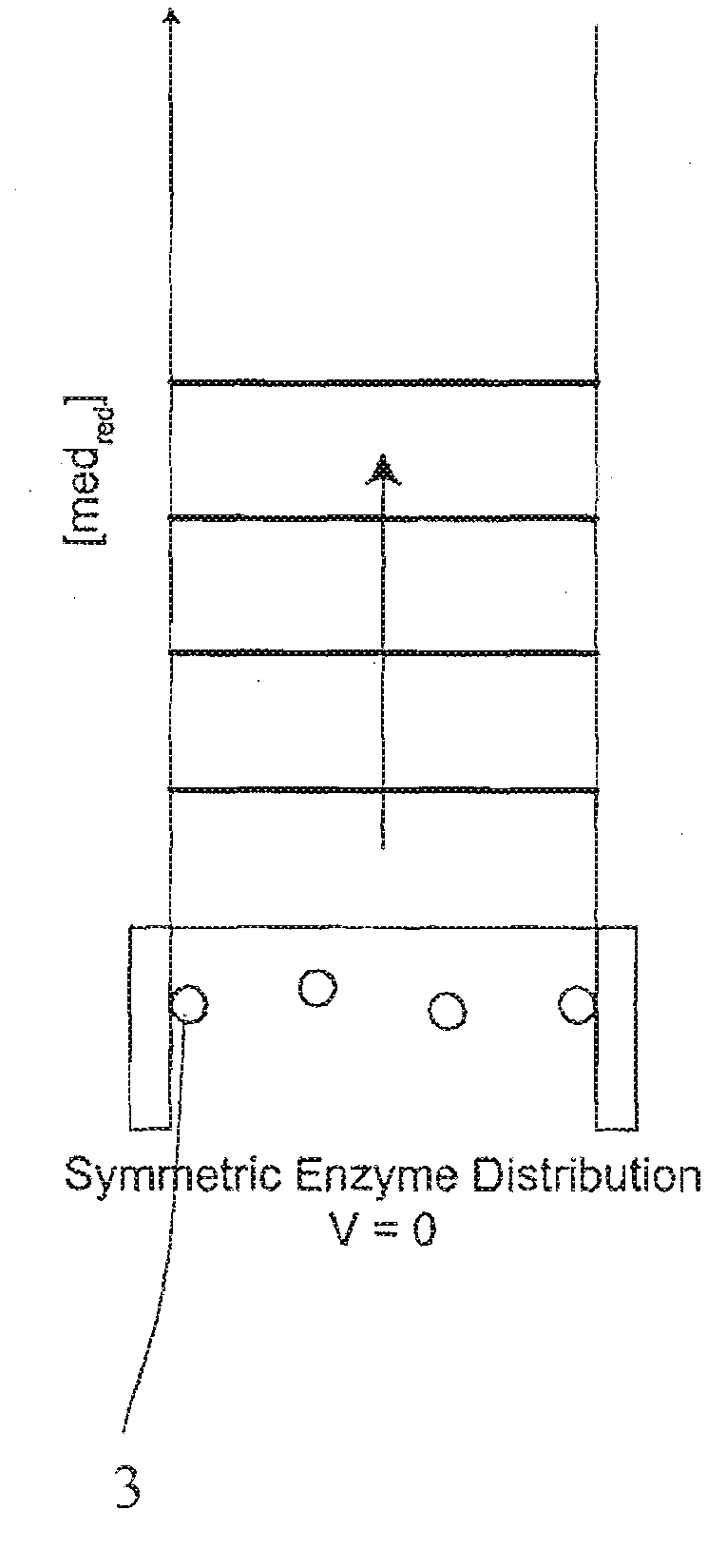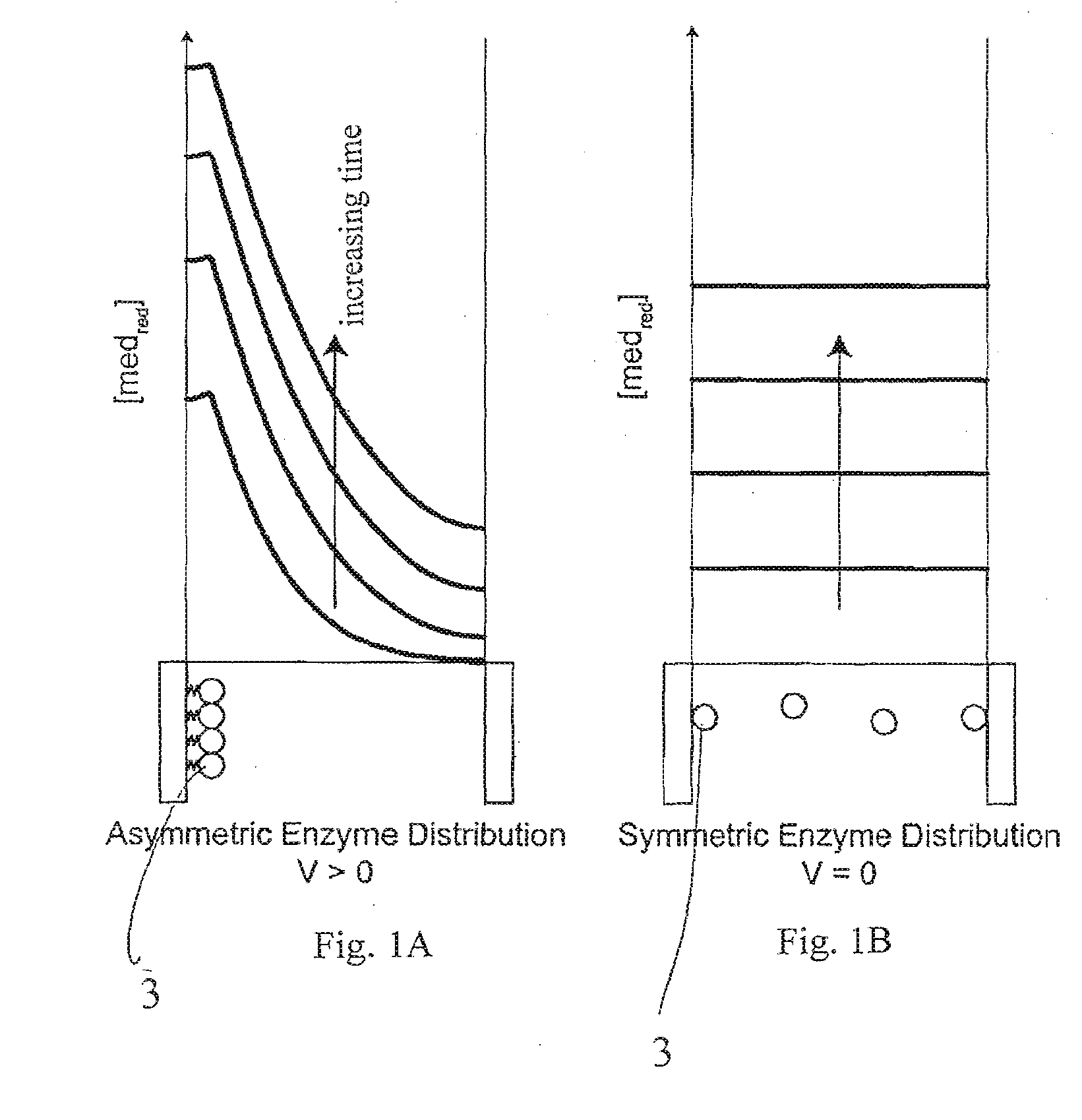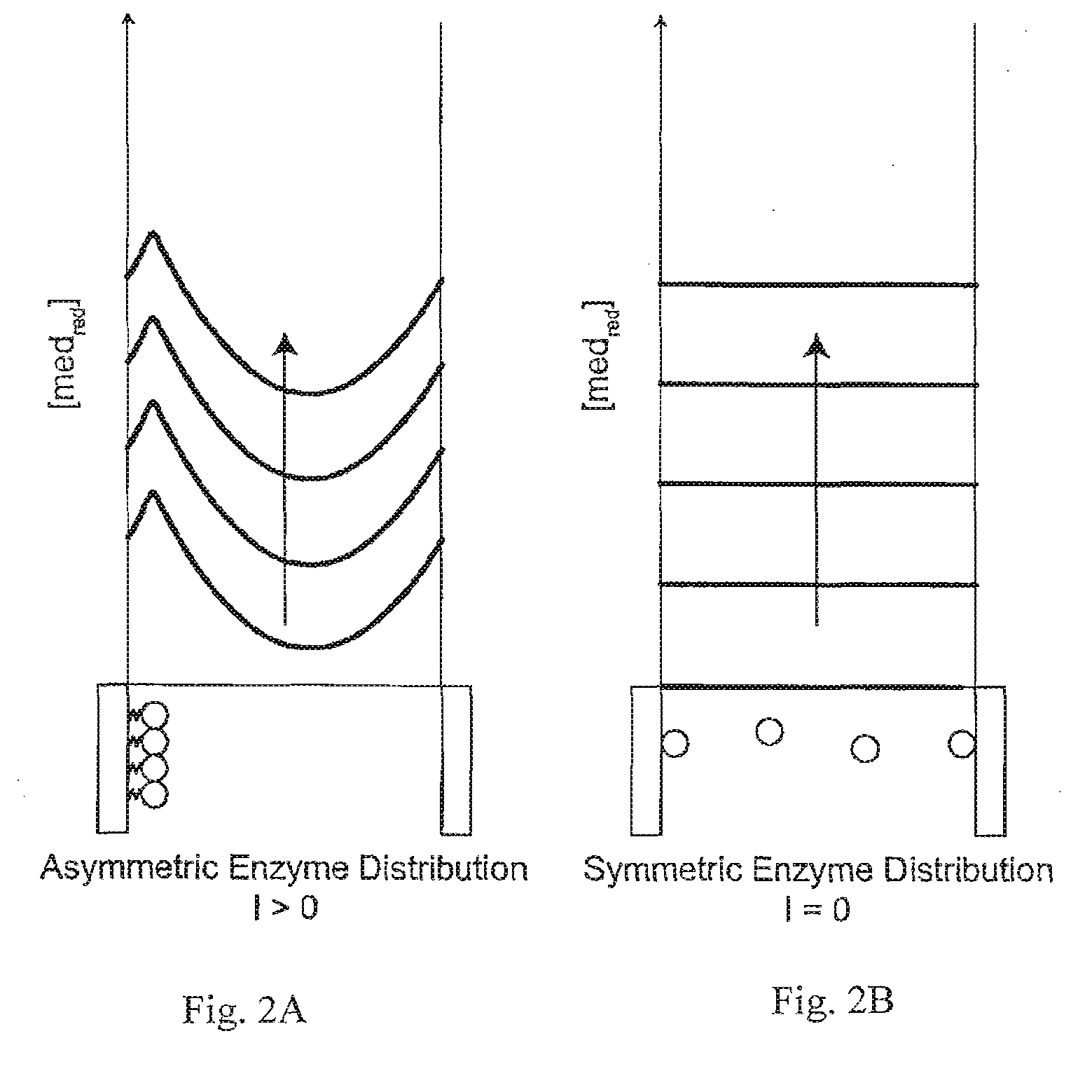Electrochemical Analyte Detection Apparatus and Method
an electrochemical and analyte technology, applied in the field of electrochemical detection apparatus and method, can solve problems such as immobilization of enzymes, and achieve the effects of low cost, convenient use, and less cos
- Summary
- Abstract
- Description
- Claims
- Application Information
AI Technical Summary
Benefits of technology
Problems solved by technology
Method used
Image
Examples
example 1
[0069]An electrochemical cell test strip comprising two gold electrodes separated by a double-sided adhesive layer was constructed using the method described in US Patent Publication No. US-2005-0258035-A1 which is incorporated herein by reference. An total of 100 nL enzyme solution (27 mg / mL glucose oxidase in 100 mM sodium citrate buffer pH: 4.1) was dispensed onto the two electrodes and allowed to dry. Test strips were made with different ratios of electrode enzyme activity by apportioning the 100 nL enzyme solution between the two electrodes, with the balance made up with water. For example to make strips with 75% enzyme activity on electrode 1 and 25% enzyme activity on electrode 2, 100 nL of a mixture of 3 parts enzyme solution to 1 part water was dispensed onto electrode 1, and 100 nL of a mixture of 1 part enzyme solution to 3 parts water was dispensed onto electrode 2. A solution of 100 mM beta-D-glucose and 100 mM potassium ferricyanide in water was added to the electroche...
example 2
[0071]By combining the determination of the ratio of enzyme activity dispensed on each electrode (as in Example 1) with a determination of total enzyme activity, the amount of enzyme (E1) present at one electrode can be determined independent of the amount (E2) present at the other electrode.
[0072]Varying amounts of enzyme were dispensed on 2 surfaces that served as electrodes in a sandwich configuration as described in Example 1. Ratio of enzyme activity present at the two electrodes (R=E1 / E2) was determined by measurement of the current flowing in a short circuit configuration. Then the total enzyme activity (Et=E1+E2) was determined by measuring the current flowing with an applied potential difference. E1 and E2 were then calculated from the determined values of R and Et.
[0073]Test strips containing a range of 0.25 microgram to 1 microgram of glucose oxidase were made, with the enzyme distributed between the two electrodes such that R was between 1.5 and 19. These strips were mad...
PUM
| Property | Measurement | Unit |
|---|---|---|
| pH | aaaaa | aaaaa |
| chemical potential | aaaaa | aaaaa |
| concentration | aaaaa | aaaaa |
Abstract
Description
Claims
Application Information
 Login to View More
Login to View More - R&D
- Intellectual Property
- Life Sciences
- Materials
- Tech Scout
- Unparalleled Data Quality
- Higher Quality Content
- 60% Fewer Hallucinations
Browse by: Latest US Patents, China's latest patents, Technical Efficacy Thesaurus, Application Domain, Technology Topic, Popular Technical Reports.
© 2025 PatSnap. All rights reserved.Legal|Privacy policy|Modern Slavery Act Transparency Statement|Sitemap|About US| Contact US: help@patsnap.com



